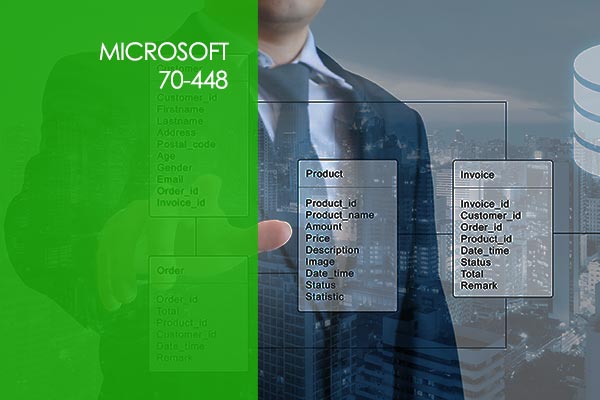Certified Ethical Hacker (CEH) Version 11 Part 2: Ethical Hacker (ECC 312-50)
Module 21 – CEH v11 Ethical Hacker Course Intro
21.1 About this course – Ethical Hacker
21.2 About the Instructor
Module 22 – CEH v11 Intro to Footprinting
22.1 Footprinting Concepts
22.2 Footprinting Methodology
22.3 OSINT Tools
22.4 Advanced Google Search
22.5 Whois Footprinting
22.6 Activity – Performing a Whois Lookup
Module 23 – CEH v11 Footprinting Network Services
23.1 DNS Footprinting
23.2 Website Footprinting
23.3 Email Footprinting
23.4 Network Footprinting
23.5 Footprinting through Social Networking Sites
Module 24 – CEH v11 Defend Against Footprinting
24.1 Competitive Intelligence Gathering
24.2 Footprinting Countermeasures
24.3 Footprinting Penetration Testing
24.4 Review
Module 25 – CEH v11 Intro to Scanning
25.1 Scanning Concepts
25.2 ICMP Discovery Scans
25.3 Other Discovery Scans
Module 26 – CEH v11 Port Scanning
26.1 Ports
26.2 TCP Flags and Handshakes
26.3 TCP Scan Types
26.4 Other Scanning Techniques
Module 27 – CEH v11 Vulnerability Scanning
27.1 Banner Grabbing
27.2 Vulnerability Scanning
27.3 SSDP Scanning
Module 28 – CEH v11 NMAP
28.1 Nmap
28.2 Common Nmap Scans
28.3 Nmap Options
28.4 Nmap Stealth Scans
28.5 Hping and Other Scanners
Module 29 – CEH v11 Firewalls and Intrusion Detection
29.1 Firewall Types
29.2 Firewall Features
29.3 Firewall Features Part 2
29.4 Firewall Configurations
29.5 Intrusion Detection and Prevention
Module 30 – CEH v11 Evading Detection
30.1 Firewall and IDS Evasion
30.2 Firewall and IDS Evasion Part 2
30.3 Firewalking
30.4 Probing a Firewall
30.5 Probing a Firewall Part 2
Module 31 – CEH v11 Proxies and VPNs
31.1 Proxies
31.2 VPNs
31.3 Tor
31.4 Scanning Countermeasures
31.5 Scanning Penetration Testing
31.6 Review
Module 32 – CEH v11 Accessing Vulnerability
32.1 Vulnerability Assessment Overview
32.2 Vulnerability Scoring Systems
32.3 Vulnerability Assessment Tools
Module 33 – CEH v11 Vulnerability Research
33.1 Scanner Output and Reports
33.2 Vulnerability Research
33.3 Review
Module 34 – CEH v11 Intro to Enumeration
34.1 Enumeration Concepts
34.2 Enumeration Techniques and Tools
34.3 Service and Application Enumeration
34.4 SMB and NetBIOS Enumeration
Module 35 – CEH v11 Service Enumeration
35.1 SNMP Enumeration
35.2 LDAP Enumeration
35.3 DNS Enumeration
35.4 SMTP Enumeration
35.5 NTP Enumeration
Module 36 – CEH v11 Advanced Enumeration
36.1 Remote Connection Enumeration
36.2 File Transfer Enumeration
36.3 VoIP Enumeration
36.4 IPSEC Enumeration
36.5 IPv6 Enumeration
36.6 BGP Enumeration
Module 37 – CEH v11 Command Line Enumeration
37.1 Windows Command Line Enumeration
37.2 Linux Command Line Enumeration
37.3 Linux Command Line Enumeration Part 2
Module 38 – CEH v11 Defending Against Enumeration
38.1 Enumeration Countermeasures
38.2 Enumeration Countermeasures Part 2
38.3 Enumeration Penetration Testing
38.4 Review
Module 39 – CEH v11 Intro to System Hacking
39.1 System Hacking Concepts
39.2 System Hacking Tools and Frameworks
39.3 Searchsploit
39.4 Compiling and Running Exploits
Module 40 – CEH v11 System Hacking with Metasploit
40.1 Metasploit
40.2 Metasploit Search
40.3 Metasploit Exploits and Payloads
40.4 Metasploit Meterpreter
40.5 Metasploit Connectivity
40.6 Metasploit Impersonation and Migration
Module 41 – CEH v11 Further Attacking a Compromised System
41.1 Netcat
41.2 Pivoting
41.3 Netcat Relays
41.4 Metasploit Post Exploitation Modules
41.5 Common Operating System Exploits
Module 42 – CEH v11 Hacking an Operating System
42.1 Hacking Windows
42.2 Hacking Linux
42.3 Network Service Exploits
42.4 Password Attacks
Module 43 – CEH v11 Password Cracking Overview
43.1 Dictionary Attack
43.2 Brute Force Attack
43.3 Password Spraying
43.4 Rainbow Tables
Module 44 – CEH v11 Performing Password Attacks
44.1 Network Service Password Attacks
44.2 Password Cracking Tools
44.3 Online Password Cracking Sites
44.4 Windows Password Cracking
44.5 Linux Password Cracking
44.6 Other Methods for Obtaining Passwords
Module 45 – CEH v11 Using Exploits
45.1 Keylogging
45.2 Spyware
45.3 Rootkits
45.4 Buffer Overflows
45.5 Privilege Escalation
45.6 Hiding Files
Module 46 – CEH v11 Hiding Information
46.1 Alternate Data Streams
46.2 Steganography
46.3 Creating and Maintaining Remote Access
46.4 Hiding Evidence
Module 47 – CEH v11 Covering Tracks
47.1 Covering Tracks in Windows
47.2 Covering Tracks in Linux
47.3 System Hacking Counter-Measures
47.4 System Hacking Penetration Testing
47.5 Review
Module 48 – CEH v11 Malware Overview
48.1 Intro to Malware
48.2 Virus Overview
48.3 Virus Types
48.4 Self-Hiding Viruses
48.5 Worms
48.6 Trojans
48.7 Trojan Types
48.8 RATS
Module 49 – CEH v11 Hacking With Malware
49.1 Ransomware
49.2 Botnets
49.3 Covert Channel Trojans
49.4 Banking Trojans
49.5 Rootkits
Module 50 – CEH v11 Creating Malware
50.1 Other Malware
50.2 Malware Makers
50.3 Dropper and Stage Creation
50.4 Exploit Kits
Module 51 – CEH v11 Detecting Malware
51.1 Malware Detection
51.2 Malware Detection Part 2
51.3 Malware Analysis
Module 52 – CEH v11 Defending Against Malware
52.1 Malware Reverse Engineering
52.2 Malware Countermeasures
52.3 Malware Penetration Testing
52.4 Review
Module 53 – CEH v11 Sniffing
53.1 Sniffing Concepts
53.2 Types of Sniffing
53.3 Sniffing Protocols
53.4 Sniffing Tools
Module 54 – CEH v11 Spoofing and MITM
54.1 ARP
54.2 ARP Spoofing
54.3 MITM
54.4 MAC Attacks
54.5 MAC Spoofing
54.6 DHCP Attacks
Module 55 – CEH v11 Defending Against Poisoning and Sniffing
55.1 Name Resolution Poisoning
55.2 VLAN Hopping
55.3 Sniffing Counter Measures
55.4 Sniffing Penetration Testing
55.5 Review
Module 56 – CEH v11 Social Engineering
56.1 Social Engineering Concepts
56.2 Social Engineering Techniques
56.3 Social Engineering Examples
56.4 Social Engineering Tools
Module 57 – CEH v11 Defending Against Social Engineering
57.1 Social Media
57.2 Identity Theft
57.3 Insider Threats
57.4 Social Engineering Countermeasures
57.5 Social Engineering Penetration Testing
57.6 Review
Module 58 – CEH v11 Denial-of-Service
58.1 DoS-DDoS Concepts
58.2 Volumetric Attacks
58.3 Fragmentation Attacks
58.4 State Exhaustion Attacks
58.5 Application Layer Attacks
Module 59 – CEH v11 Advanced DoS Attacks
59.1 Protocol Attacks
59.2 Other Attacks
59.3 Botnets
Module 60 – CEH v11 Defending Against Denial-of-Service
60.1 DoS-DDoS Attack Tools
60.2 DoS-DDoS Countermeasures
60.3 Dos Penetration Testing
60.4 Review
There are no items in the curriculum yet.








